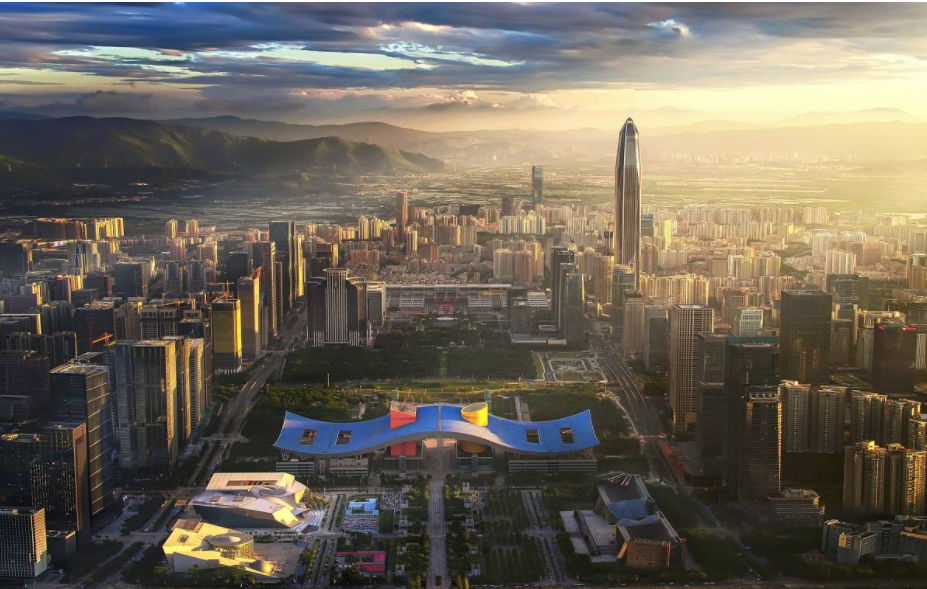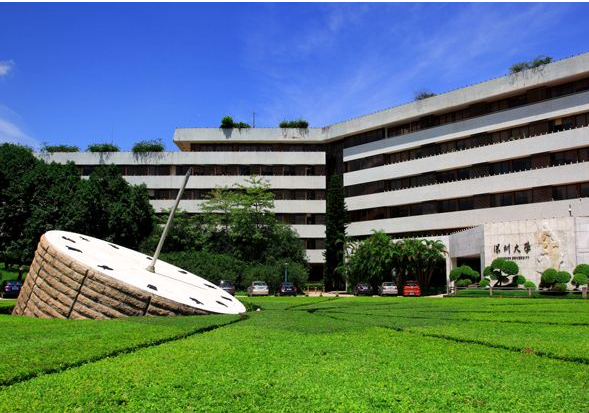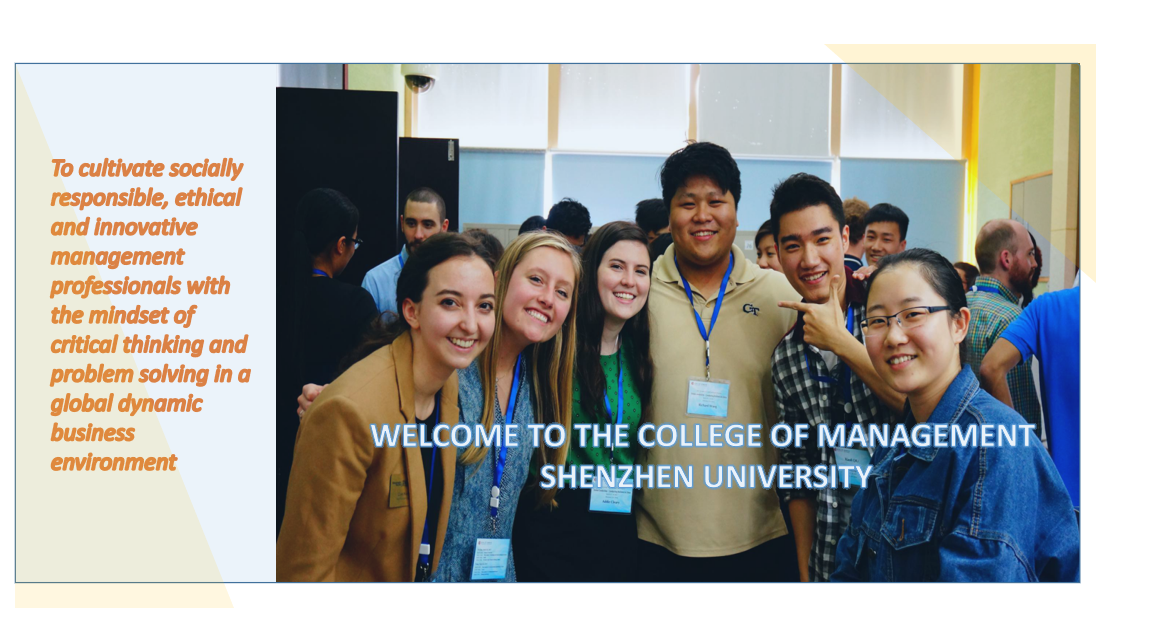College of Management

The College of Management of Shenzhen University was established in June 1997, consisting of five departments: Business Management, Management Science, Public Administration, Human Resource Management and Marketing.
There are 123 faculty members and 38 administrative staff in the College, with 209 postgraduate students and PhD candidates, 2,650 full-time undergraduates, 40 international cooperation students and over 4,000 part-time students studying in campus.
In recent years, the College of Management has been developing fast in academic achievements. On the average, we have 8 grants supported by NSFC (Natural Science Foundation of China) and 2 grants supported by SSFC (Social Science Foundation of China) each year. Our faculty members have published academic papers on top-tier journals and academic books in both China and Overseas.
The College of Management focuses on cultivating forward-thinking business people through innovation and entrepreneurship and preparing them for becoming the elites of the future. Consequently, we built an Experimental Center for Modern Management Teaching to train and improve the students’ practical ability. The Experimental Center consists of Integrated Information Management Laboratory, E-commerce innovation and entrepreneurship Laboratory, ERP Laboratory and Merchandising Laboratory. Normally, it can offer 45 experimental courses and 230 experimental programs. Every year, it organizes and assists students to attend sorts of activities related to experiment-based teaching and simulation competitions of business decision-making. So far, the student team of College of Management has achieved 5 global prizes and 50 national prizes involving the competitions such as the Peak Time International and the National ERP Sand Table.
To support the innovation and entrepreneurship education, College of Management provides 19 general courses and 5 advanced courses on entrepreneurship to the students of Shenzhen University. We established Entrepreneurship Elite Program in 2011 and Public Service Innovation Program in 2015. Twenty-eight percent of the students in the Entrepreneurship Elite Program have founded their own companies in China.
We also try to expand the students’ global vision by international study programs and joint programs. For example, to obtain their degrees, our MBA students must pass at least twice international studies. Till now, College of Management has 3 joint programs collaborated with foreign universities and more than ten exchange student programs.
We are young but we develop very fast. We are making changes by improvement and responsibility.
Shenzhen City

Shenzhen, located in the Pearl River Delta and to the north of Hong Kong, is one of the first-tier cities in China. The city covers an area of 1,991.64 square kilometers including urban and rural areas, with a population of over 18 million in 2014.
Shenzhen is a major financial center in southern China. The city is home to the Shenzhen Stock Exchange as well as the headquarters of the most successful high-tech companies in China, including Huawei, Tencent, DJI, BYD, ZTE, Skyworth and so on. Many foreign high-tech companies have their China operations centers located in the Science and Technology Park of the Nanshan District near Shenzhen University. Shenzhen is also an extremely fertile ground for startup companies, whether local or foreign Dubbed as China’s Silicon Valley, Shenzhen is the fastest-growing cityvisible in its concentration in high-tech industry and innovation.
As Shenzhen embraces the world, concomitantly it is becoming internationalized. Shenzhen has 17 sea land and air ports, including China's largest land passenger port and land cargo port. Due to the “reform and opening” policy, Shenzhen creates many miracles. It is ranked the 3rd by the ability to develop Headquarters’ Economy among China’s 35 major cities, and 2nd after Hong Kong in the “Top Ten Cities with Comprehensive Competitiveness Index”. Shenzhen also emphasizes on environment protection and urban greening construction. It is the first “international garden city” in China and one of the Best 500 cities rated by the United Nations Environment Program. As for the GDP of 2019,Shenzhen ranked the 3rd among the cities (in mainland China) after Shanghai, Beijing and Guangzhou. Besides, with 8.8% of GDP increase rate,Shenzhen outperforms Shanghai, Beijing, Guangzhou and Hong Kong.
Since its foundation, Shenzhen has created a migrant culture and an innovative spirit of "encouraging innovation and pursuing excellence."
Shenzhen University

Shenzhen University (SZU) was established in 1983 with the approval of the Ministry of Education. The Central Government, the Ministry of Education and local governments pay high attention to the construction of universities in the Special Administrative Region. A large number of well-known scholars have gathered in Shenzhen University to build Chinese and foreign language disciplines, Tsinghua University to aid and build the electronic and architectural disciplines, and National People's Congress (NPC) aided construction of economics and law disciplines. At the beginning of the establishment of the University, the University was determined to reform the management system of colleges and universities, and actively explored scholarship, credit system, work study program and other aspects. It took the lead in implementing the system of non-exclusive distribution and two-way selection of graduates in China, and carried out the system of full employment of teaching staff and the reform of socialized management of logistics department, which aroused strong repercussions throughout the country.
Since the establishment of 37 years, the SZU has been closely following the special economic zone and is determined to reform and develop rapidly. Adhering to the motto of "self-reliance, self-discipline and self-improvement", the university has formed the school running characteristics of "special zone University, window University and experimental university", formed a complete talent training system from bachelor's degree, master's degree to doctor's degree, and multi-level scientific research and social service system. It has become a comprehensive university with complete disciplines, perfect facilities, excellent teachers and standardized management. Shenzhen University is a national cultural quality education base for college students and a national civilized campus. In order to realize the connotative development of higher education, the university has formulated the outline of cultural innovation and development of Shenzhen University, and established Rao Zongyi Culture Research Institute and Liu Yuyi art academy to build the first-class university culture of the socialist special zone with Chinese characteristics with high cultural consciousness and cultural confidence.
Shenzhen University comprises four campuses: Yuehai, Canghai, Lihu and Luohu, with a total campus area of 2.72 square kilometers. The university has rich teaching resources and complete scientific research facilities. The total construction area of the campus is 1.469 million square meters, and the total value of teaching and scientific research equipment is 2.8 billion yuan. The library covers an area of 53,202 square meters (including the first phase of the library of Lihu campus), and it is with more than 4.23 million paper-based resources, 393 kinds of databases, including 2.65 million full-text e-books and 129600 kinds of full-text electronic journals. At present, it owns a National Undergraduate Comprehensive Reform Pilot, a National Talent Training Mode Innovation Experimental area, and a National Practice Teaching Base. It contains 2 National Experimental Teaching Demonstration Centers, 1 National Virtual Simulation Experimental Teaching Center, 16 Provincial Experimental Teaching Demonstration Centers and 3 Provincial Virtual Simulation Experimental Teaching Centers. It owns 3 National Engineering Laboratories, 1 National Engineering Technology Research Center, 2 key laboratories of the Ministry of education, 1 international cooperation base of the Ministry of Science and Technology, and 11 provincial key laboratories.
At present, there are about 37,684 fulltime students in Shenzhen University, including 28,632 undergraduates, over 8,337 postgraduates (301 doctoral), 414 international students and 23706 adult education students. The SZU has a complete range of disciplines with strong comprehensiveness, covering 11 disciplines including philosophy, literature, economics, law, pedagogy, science, engineering, management, medicine, history, and art. The university has 24 teaching colleges, 100 undergraduate majors and two affiliated hospitals. At present, there are 5 national characteristic specialties, 14 provincial characteristic specialties and 15 provincial key disciplines. There are 10 first-class disciplines authorized by doctoral degree, 9 mobile post-doctoral research stations and 1 post-doctoral workstation. There are 38 first-class disciplines authorized by master's degree and 22 authorized categories of professional master's degree. Engineering, clinical medicine, materials science, biology and biochemistry, computer science, chemistry and physics have entered the top 1% of ESI disciplines in the world, ranking 84th in the extended edition of ESI high cited papers list in Chinese universities. The University initiated the establishment of the "national local university UOOC alliance", with 131 participating universities, 471 online courses, 517 course selection schools, 61 credit recognition schools, and more than 1.04 million students. In the academic year of 2018-2019, the undergraduates won 773 competitions at all levels, including 87 at international level, 337 at national level and 328 at provincial and ministerial level.
The structure of teaching staff has been continuously optimized, and the introduction and cultivation of high-level talents have achieved fruitful results. At present, the university comprises 3,868 people, including 2443 full-time teachers (593 professors and 694 associate professors), 590 technicians and 835 administrators, 1,449 postdoctoral students, 647 full-time researchers and 136 visiting professors. The SZU owns 18 academicians of the Chinese Academy of Sciences and the Chinese Academy of Engineering (including 6 short-term employees), 2 academicians of the American Academy of medicine and Bioengineering, 1 academician of the Royal Academy of engineering of the United Kingdom, 2 academicians of the Canadian Academy of engineering, 2 academicians of the Japanese Academy of Engineering, 1 academician of the Russian Academy of engineering, 3 academicians of the Eurasian Academy of Sciences, 3 academicians of the American Academy of Sciences, the Academy of engineering and the Academy of Medical Sciences, and the 2 academicians of European Academy of Sciences, 1 academician of the Singapore Academy of Sciences (short-term), 1 academician of the Royal Canadian Academy of Sciences (short-term), 1 academician of the Royal Dutch Academy of Sciences (short-term), 1 academician of the Australian Academy of Sciences (short-term), and 1 Nobel Prize winner (physiology and medicine). The full-time high-level talent team includes 5 Chief Scientists of the National "973 Program", 9 Yangtze River scholars, 20 winners of the National Science Fund for Distinguished Young Scholars, 15 winners of the National Science Fund for Outstanding Young Scholars, 9 "Outstanding Talents in the New Century" of the Ministry of Education, and 4 members of the Ten Thousand Talent Program.
reform of scientific research system, and the scientific research projects and funds have increased significantly. In 2019, the total funding for scientific research exceeded 1.1 billion yuan, and 365 National Natural Science Foundation projects were awarded with the ranking of 16th in China and, it ranked as the Top 2 among Guangdong universities. In 2019, 30 national social science fund projects were awarded, ranking 36th in China and 3rd in Guangdong universities. There are 3,791 SCI papers and 381 SSCI papers. 2846 scientific research awards were obtained. 425 patents were authorized, including 229 invention patents. The science and Engineering Edition of the journal was rated as "the top 100 science and technology journals of Chinese universities in 2018"; the reprint amount of papers in the humanities and Social Sciences Edition of the journal leapt to the 13th place in the national university journals.
The University actively promotes "international talent training, international scientific research cooperation, international teacher construction, and international cultural exchange". Now, it has established contact with 289 overseas universities to carry out various forms of international cooperation, such as student exchange, teacher training, cooperative school running, etc., so as to comprehensively improve the quality and level of international exchange.
The Shenzhen University will continue to be based on Shenzhen, to rely on the economic and social development of Guangdong-Hong Kong-Macao Greater Bay Area with the international oriented development, to cultivate high-quality innovative and entrepreneurial talents with the spirit of reform and innovation and adhere to cultural guidance, strengthen innovation drive, to realize connotative development, and strive to build a high-level University in the new era that people are satisfied with.





